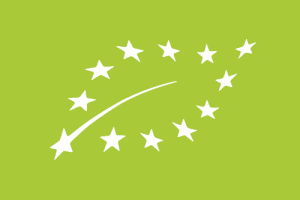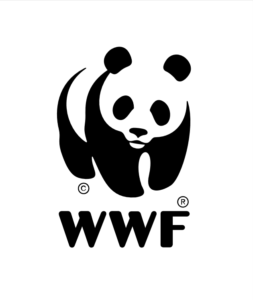Frequently Asked Questions
solutions
What is “sustainable seafood”?
“Sustainable seafood” should fulfil the following criteria:
- the product is traceable (we know where it comes from)
- the fishery or producer cares for marine habitats
- the fishery or producer cares for endangered species
- the fishery doesn’t fish more than can be replenished
- the fishery or producer should care for fair labour conditions and the needs of fishing communities
Should I choose local over imported seafood?
The best choice is always local seafood that is fished sustainably. It strengthens regional economy and has short transit. To ensure your local seafood is fished sustainably, please check out our recommendations or the WWF fish guide in your country.
Nevertheless, Europe is the biggest seafood importer in the world and a major part of these imports come from developing countries. According to FAO 61% of all global fish exports by quantity come from developing countries.[1] By buying imported seafood from sustainable sources, consumers can strengthen coastal communities in developing countries, while preserving fish stocks and their natural environment. Fishermen’s livelihoods and food security highly depend on sustainably managed fisheries or aquaculture.
[1] Food and Agriculture Organization of the United Nations (FAO). www.fao.org/news/story/en/item/214442/icode
What does the “EU-organic label” stand for?
Organic farmers, processors and traders must comply with strict EU requirements. These requirements stipulate the usage of organic protein crops and raw material from sustainable fisheries for carnivorous fishes. Furthermore the EU-organic label requires organic broodstock, prohibits the allowance of hormones or hormone derivatives and requests humane husbandry. Compliance is monitored on a regular basis. Organic product labels should bear the name of the producer, processor or distributor who last handled the item. The name or code number of the national certification authority should also be on the label.
Besides the EU organic label (below), several others meet, or even exceed, the strict EU standards for organic production. Please check out WWF’s recommendations in your country.
What does “MSC” stand for?
The Marine Stewardship Council (MSC) label on seafood products ensures that certified fisheries meet the following three principles:
- Sustainable fish stocks: The fishing activity must be at a level that ensures its potential indefinite continuation without harming the vitality of certain fish stocks
- Minimising environmental impact: Fishing operations must be managed to maintain the structure, productivity, function and diversity of the ecosystem.
- Effective management: The fishery must comply with respective laws and ensure thorough management that is responsive to changing circumstances.[1]
Find out more: www.msc.org
[1] https://www.msc.org/about-us/standards/fisheries-standard/msc-environmental-standard-for-sustainable-fishing
What does “ASC” stand for?
Choosing ASC certified products means buying sustainable seafood farmed in aquaculture. The Aquaculture Stewardship Council (ASC) is a certification and labelling programme for responsibly farmed seafood. Round tables of representatives of the aquaculture industry, retail and foodservice sector, NGOs, government and scientific community led to the definition of 8 standards for responsible fish farming, covering 12 species: tilapia, pangasius, salmon, trout, shrimps, bivalves (mussels, clams, oysters and scallops), abalone and seriola/cobia. The ASC’s primary role is to manage global standards for responsible aquaculture and to transform aquaculture for environmental sustainability and social responsibility.
Find out more: www.asc-aqua.org
What is aquaculture?
More than half of the seafood we eat comes from farms[1]. Seafood farming – also known as aquaculture – is the fastest growing food production system in the world.
The rapid expansion of the aquaculture industry has not come without impacts. As a conservation organization, WWF is concerned about the negative effects the industry has had –– on the environment and society. We know that when done responsibly, the impact of aquaculture on wild fish populations and marine ecosystems can be significantly and measurably reduced and coastal communities can benefit.[2]
[1] http://www.oecd-ilibrary.org/docserver/download/5115021e.pdf?expires=1441617358&id=id&accname=guest&checksum=2E9BEFCEF310CC39CFB2B51FB88309DE
Should I choose aquaculture over wild caught seafood?
There is no general “yes” or “no” answer to this question. Certainly, wild-caught fish is seen as a healthy, natural product, derived from a natural environment and therefore intrinsically “biological”. However, our oceans are already depleted due to decades of unsustainable fishing and will not offer enough resources to fulfil the demand for seafood from a rapidly increasing world population – that is expected to hit 9 billion by 2050. On the other hand, aquaculture production will continue to expand over the next 15 years to meet rising demand and fill the growing supply and demand gap[1]. Through better practices, supported by investments in technical innovations, stronger regulations and legislation, aquaculture could potentially reduce pressure on capture fisheries, minimise environmental impacts and benefit people from developing countries.
As the largest traded food commodity on the planet, we need to ensure that the seafood we eat – wild caught or cultivated – comes from sustainable sources[2].
[1] http://wwf.panda.org/?246150/Where-will-the-fish-be-in-15-years
[2] http://www.wwf.ca/conservation/oceans/sustainable_seafood/
threats
What is “overfishing”?
Overfishing occurs when more fish are caught than the population can replace through natural reproduction.
Gathering as many fish as possible may seem like a profitable practice but overfishing has serious consequences. The results not only affect the balance of life in the oceans but also the social and economic well-being of the coastal communities, that depend on fish for their livelihoods.
The increasing fishing efforts over the past 50 years and unsustainable fishing practices are pushing many fish stocks to the point of collapse. Many fishermen are aware of the need to safeguard fish populations and the marine environment. WWF works with stakeholders to reform fisheries management globally, focusing on sustainable practices that conserve ecosystems but also sustain livelihoods and ensure food security.[1]
Why doesn’t WWF recommend not eating seafood?
Fish protein represents a crucial nutritional component and thus is vital for global food security. In 2010, fish accounted for 16.7 percent of the global population’s intake of animal protein and 6.5 percent of all protein consumed. Moreover, fish provided more than 2.9 billion people with almost 20 percent of their intake of animal protein, and 4.3 billion people with about 15 percent of such protein[1]. Furthermore over 800 million people[2] are dependent on the catch, processing, production and sale of fish and seafood. In recent years, the number of jobs in this branch has increased more, even, than the world’s population has[3]. When we compare farmed fish with other farmed animals that serve for human consumption, we can see that farmed fish shows more efficient feed conversion: less feed is used to produce fish than beef, pork or chicken. The carbon footprint to farm fish is also significantly less than raising most terrestrial farm animals and might even reach the level of crop production[4].
Eating seafood certainly affects the environment through unsustainable practices of farming or fishing but if we ensure that seafood comes from sustainable sources it might be a better option than many other food alternatives.
[1] FAO (Food and Agriculture Organization of the United Nations). The State of World Fisheries and Aquaculture 2014. Rome. Page 66. http://www.fao.org/fishery/sofia/en
[2] HLPE, 2014. Sustainable fisheries and aquaculture for food security and nutrition. A report by the High Level Panel of Experts on Food Security and Nutrition of the Committee on World Food Security, Rome 2014. Page 34. http://www.fao.org/3/a-i3844e.pdf
[3] Food and Agriculture Organization of the United Nations (FAO). The State of World Fisheries and Aquaculture 2014. Rome. Page 5; http://www.fao.org/fishery/sofia/en
[4] Global Salmon Initiative. GSI Sustainability Report. http://www.globalsalmoninitiative.org/sustainability-report/
What is “bycatch”?
Wherever there is fishing, there is bycatch. Bycatch is catch that is either unused (which is mainly discarded) or unmanaged[1]. Bycatch usually occurs because modern fishing gear is very strong, often covers an extensive area and can be highly unselective – meaning that it catches not only the target species but many other creatures as well. [2]
About 40% of global marine catch is bycatch. These animals are often thrown back into the sea, either dead or dying. [3]
[1] DAVIES RWD, et al. Defining and estimating global marine fisheries bycatch. Marine Policy (2009), doi:10.1016/j.marpol.2009.01.003. http://wwf.panda.org/about_our_earth/all_publications/?160861/Defining-and-estimating-global-marine-fisheries-bycatch
[2] http://wwf.panda.org/about_our_earth/blue_planet/problems/problems_fishing/fisheries_management/bycatch222/
[3] DAVIES RWD, et al. Defining and estimating global marine fisheries bycatch. Marine Policy (2009), doi:10.1016/j.marpol.2009.01.003; http://wwf.panda.org/about_our_earth/blue_planet/publications/?160861/Defining-and-estimating-global-marine-fisheries-bycatch
Why don’t we use whatever we catch?
Sustainable fisheries rely, in part, upon an effective fishery management that sets catch limits for a target species and avoids bycatch of other species and/or undersized fish. Eating whatever we catch would mean that we would randomly eat fish species, independent of their abundance or stock health. Eating undersized fish would aggravate the situation as fewer fish could reach maturity, start breeding and rebuild fish stocks. Without strict regulations we could not manage fish stocks to guarantee a sustainable yield and there would be a risk of stocks collapsing.
What is “pirate fishing”, “illegal fishing” or “IUU fishing”?
Illegal, unreported and unregulated fishing (IUU) is a serious global problem that contributes to overfishing, creates unfair competition, and impedes sustainable fisheries. As a result of this, improved monitoring, control and surveillance have been an important preoccupation of fishery policy makers for decades.[1]
IUU fishing constitutes 30% of fish quantities yearly.[2] This often affects species whose stocks already suffer badly from overfishing. It also threatens the livelihood of every person whose existence depends on healthy oceans and their prosperity. The EU guidance on compulsory labelling for fish and seafood products is helping to improve the situation.
[1] http://www.wwf.eu/what_we_do/natural_resources/fisheries/iuu/
[2] Expert Panel on Legal and Traceable Wild Fish Products. March 2015. Page 8. http://passthrough.fw-notify.net/download/417715/http://solutions-network.org/site-legaltraceablefish/files/2015/03/EPLAT_FinalReport_March2015_Webview.pdf
















